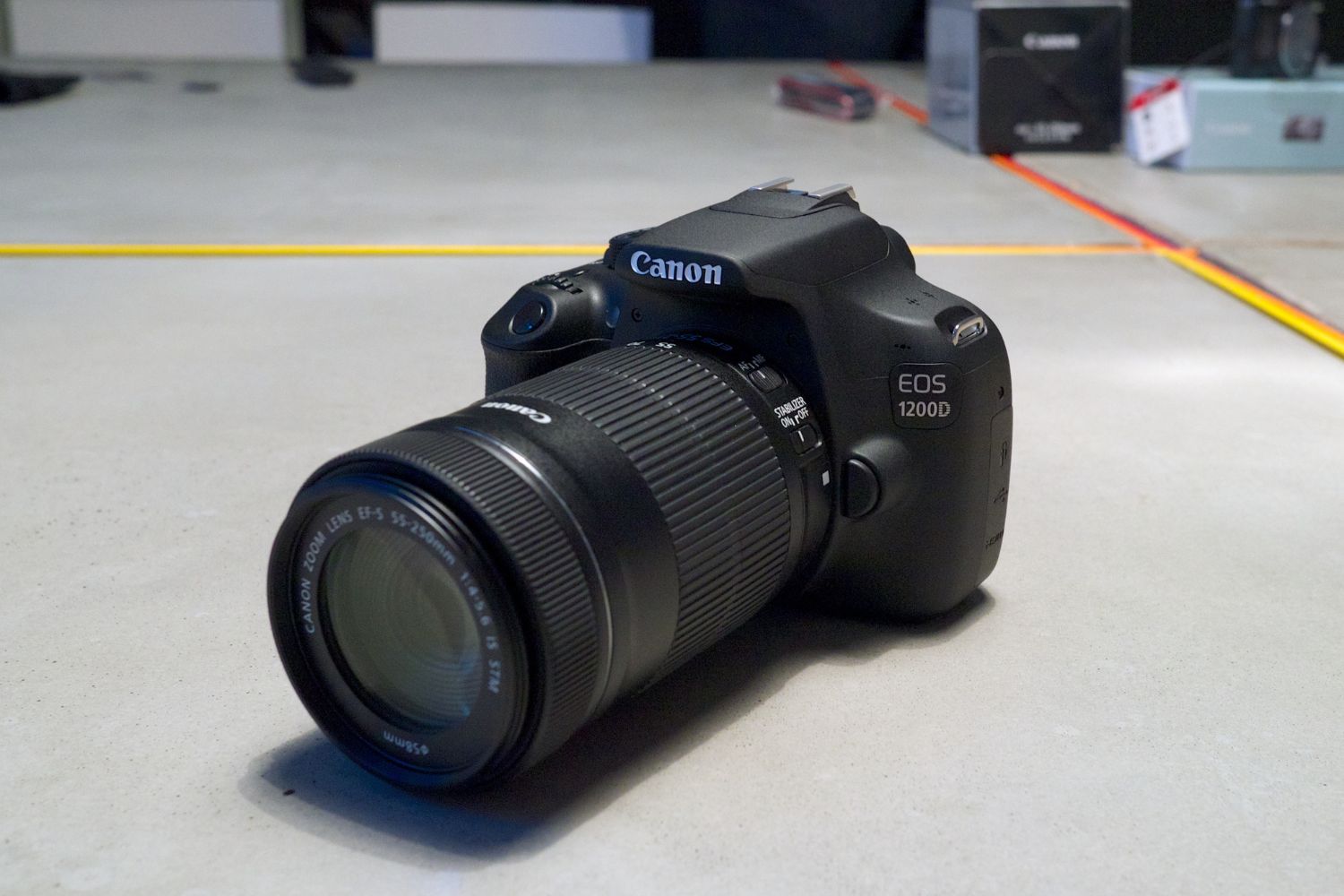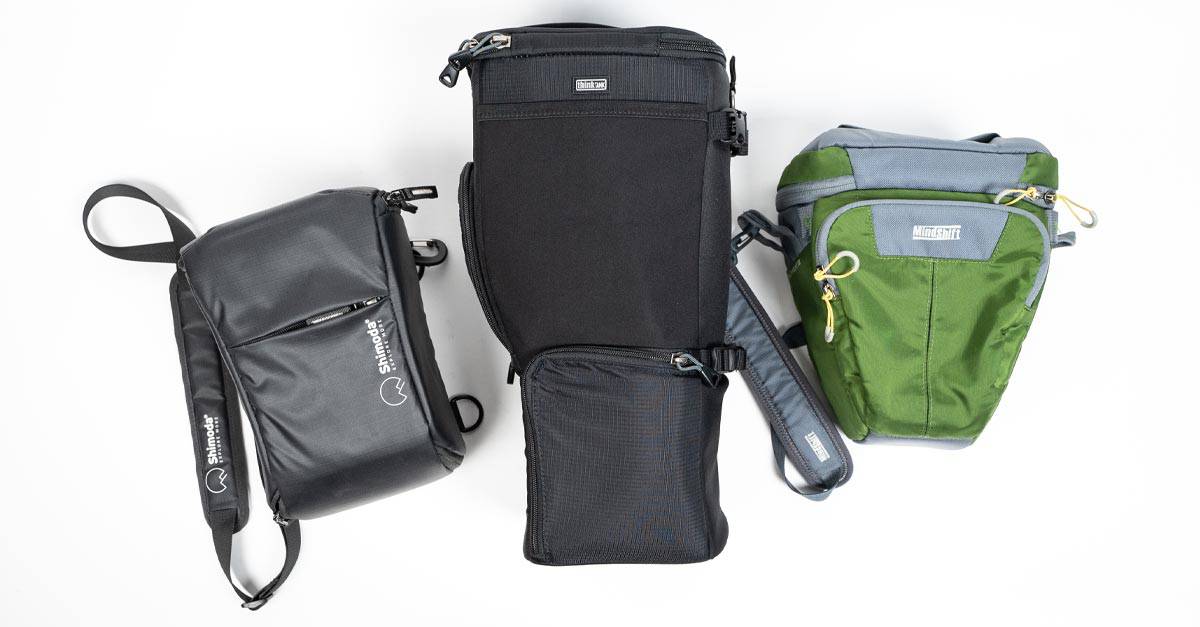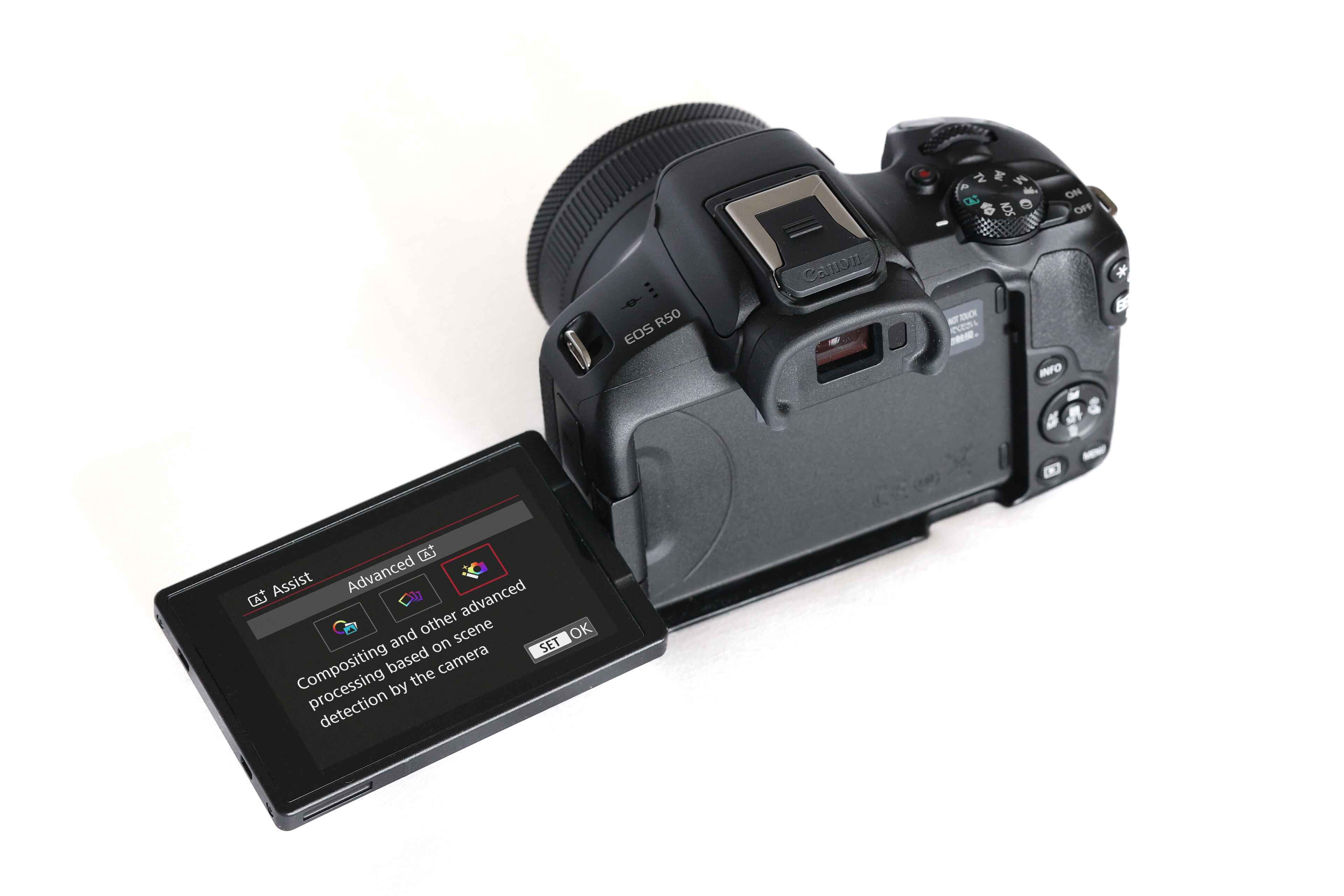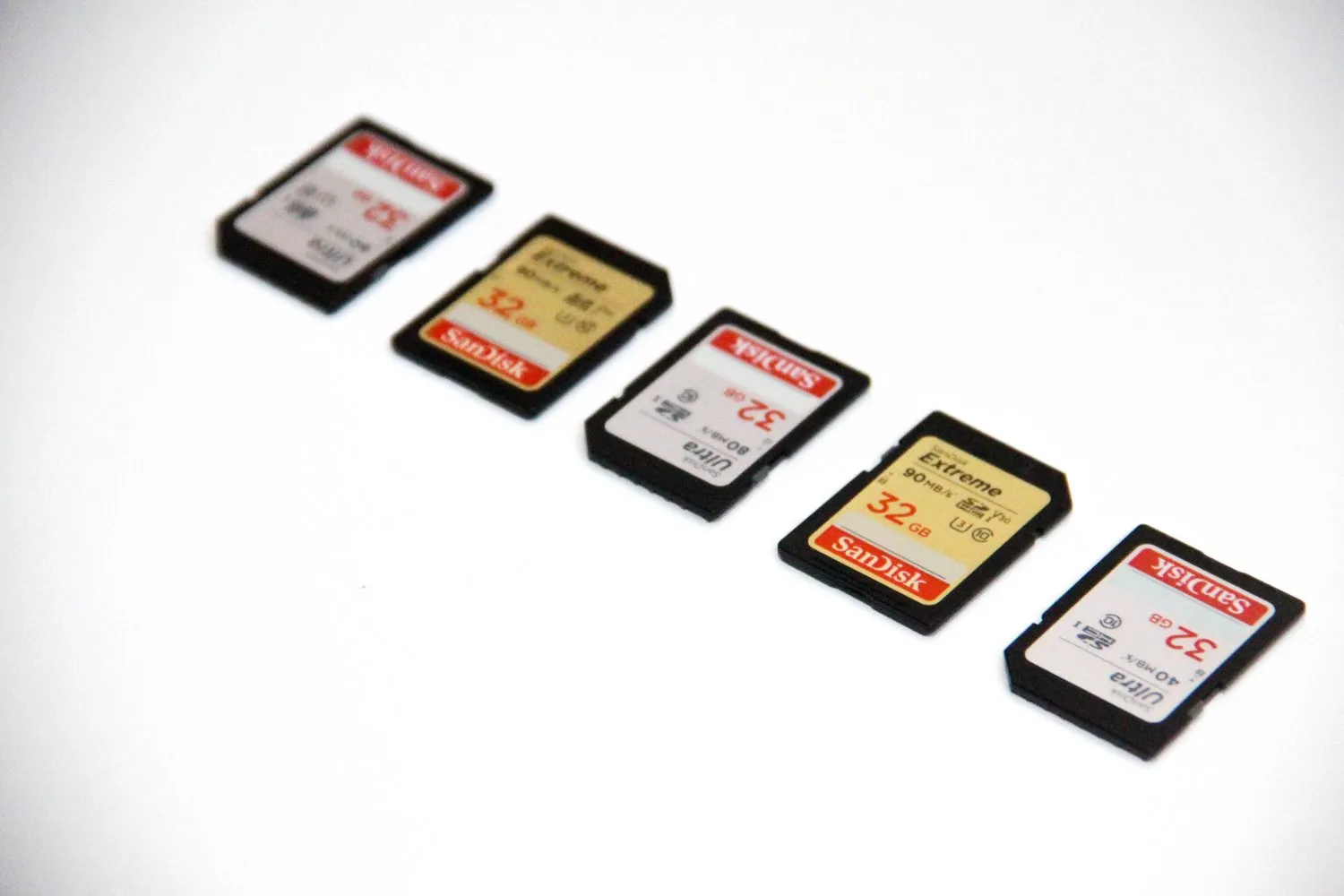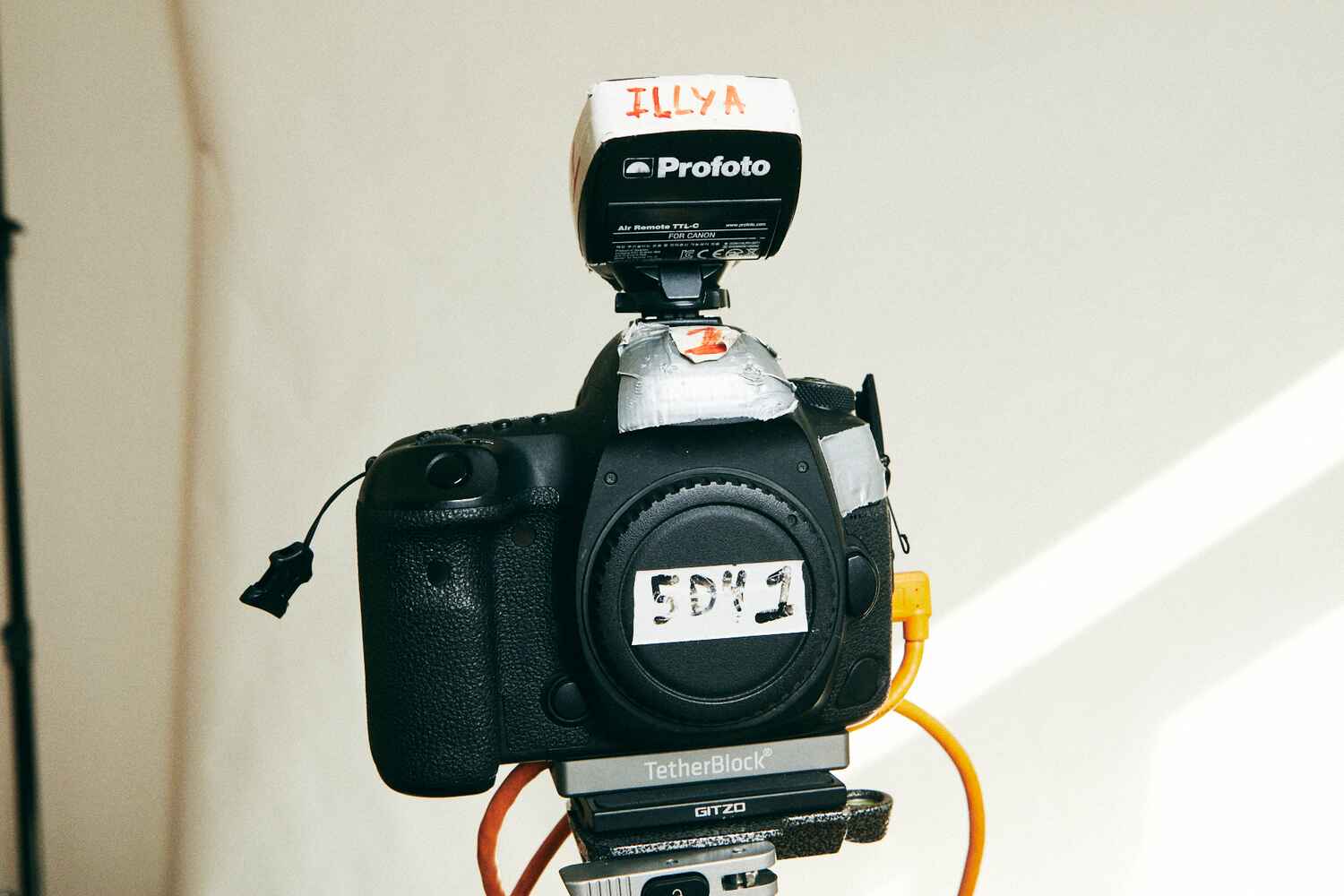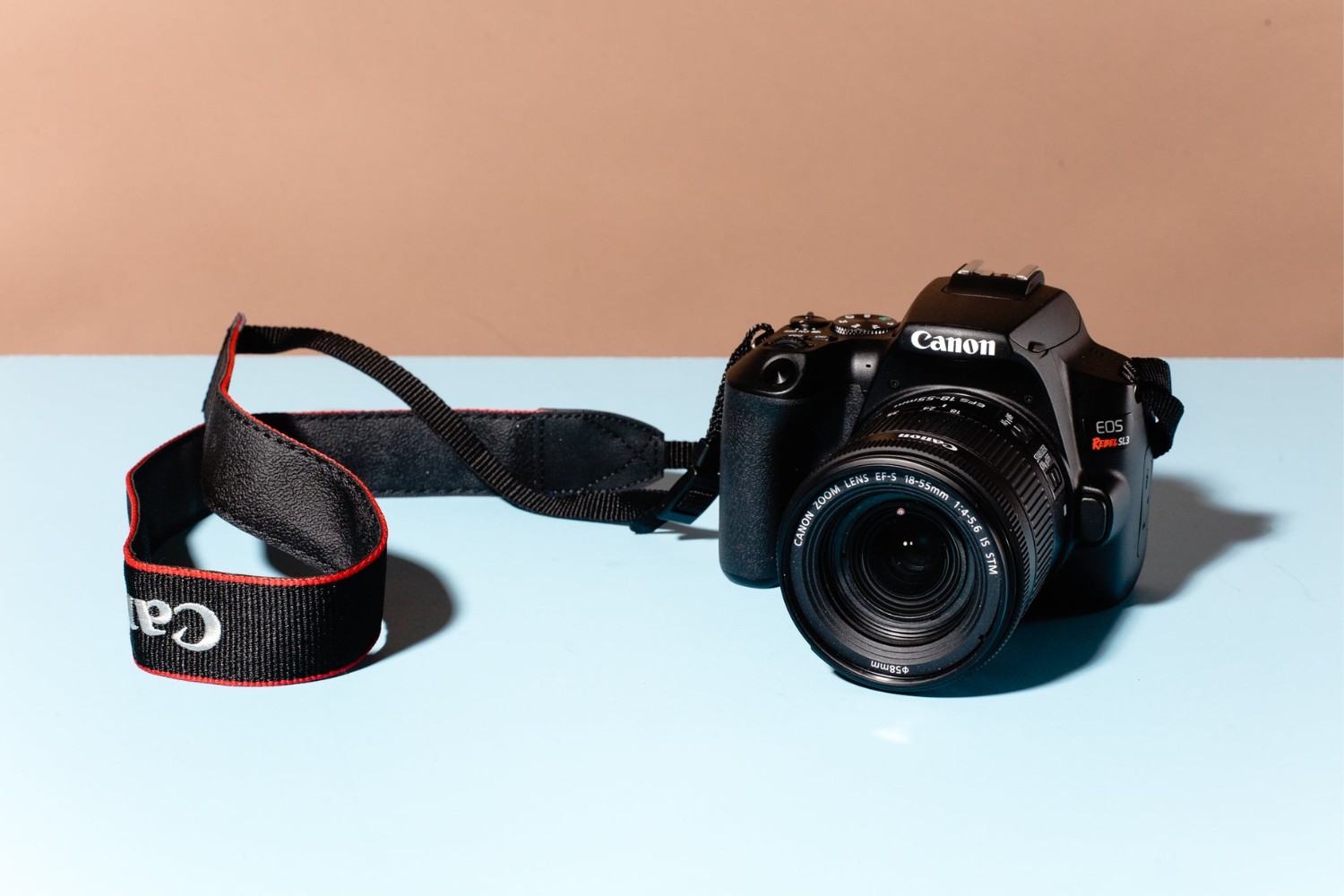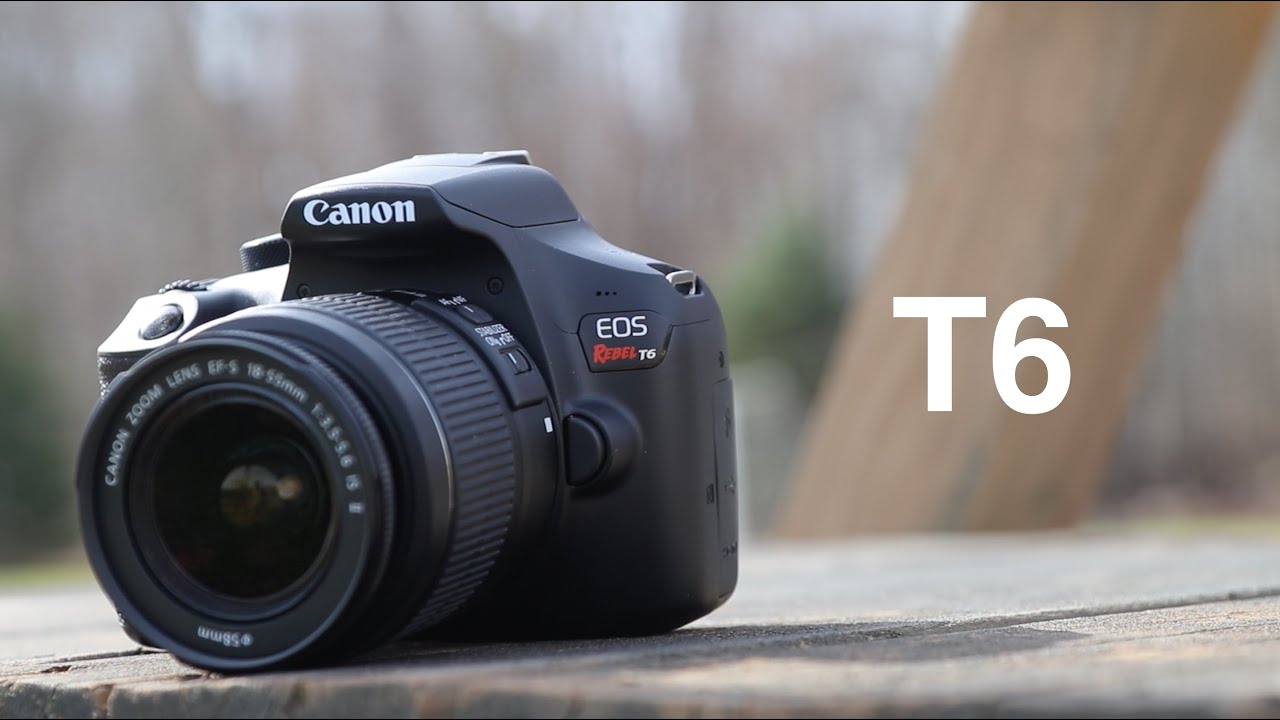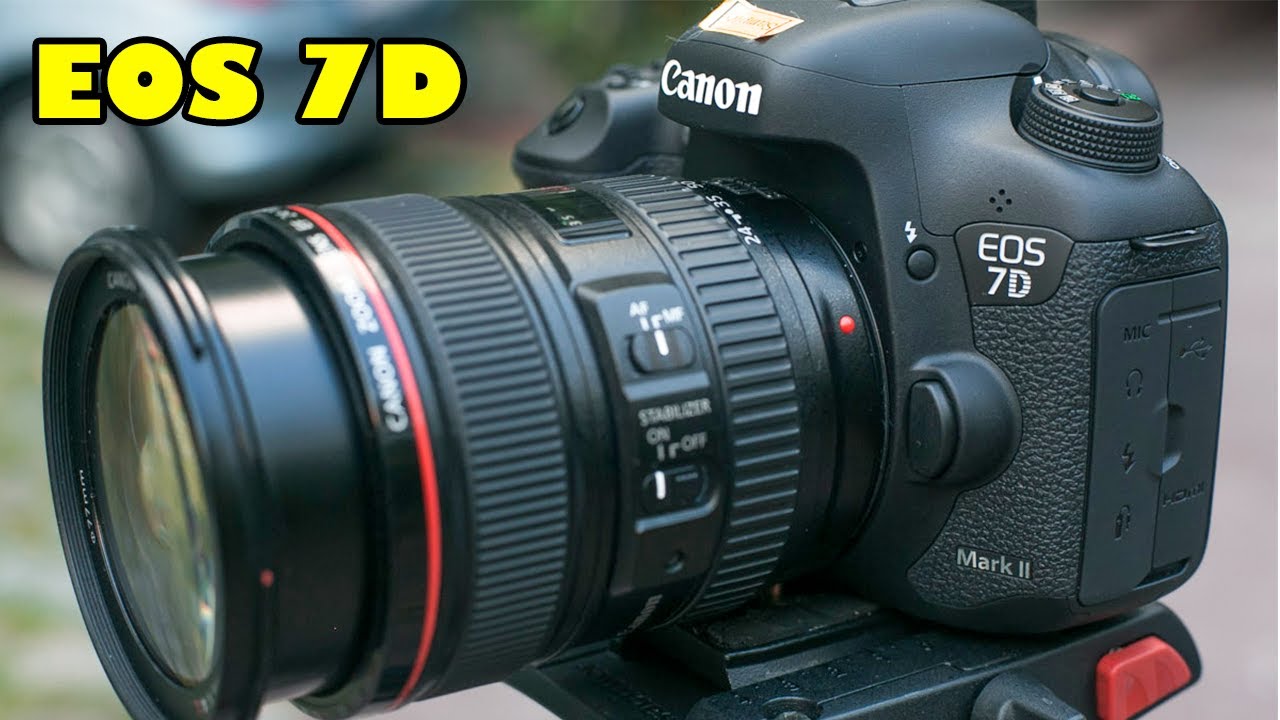Introduction
Introduction to the Canon EOS 1200D DSLR Camera
The Canon EOS 1200D is a powerful entry-level DSLR camera that offers a perfect blend of manual control and ease of use, making it an ideal choice for beginners and photography enthusiasts. This versatile camera is equipped with an 18-megapixel CMOS sensor and a DIGIC 4 image processor, allowing users to capture stunning, high-resolution images with remarkable clarity and detail.
The EOS 1200D, also known as the Rebel T5 in some regions, boasts a user-friendly interface, making it easy for newcomers to grasp the basics of photography while also providing advanced features for those looking to expand their skills. Whether you're a budding photographer eager to explore the world of DSLR photography or a seasoned enthusiast seeking a reliable and compact camera, the Canon EOS 1200D is designed to meet your needs.
This article serves as a comprehensive guide to help you master the art of photography with the Canon EOS 1200D. From understanding the camera's controls and basic photography settings to exploring advanced techniques and tips for enhancing your photography, this guide will equip you with the knowledge and skills needed to unleash the full potential of your EOS 1200D. Additionally, we'll delve into the world of lenses, providing insights into choosing the right lens for various photography scenarios, and offer valuable advice on editing and sharing your captured moments.
Join us on this journey as we unravel the capabilities of the Canon EOS 1200D, empowering you to capture breathtaking images and embark on a fulfilling photography experience. Whether you're passionate about landscape photography, portraiture, or macro shots, the EOS 1200D is your gateway to expressing creativity through the art of photography. Get ready to unleash your creativity and embark on an exciting photographic adventure with the Canon EOS 1200D DSLR camera.
Getting Started with Canon EOS 1200D
Before delving into the intricate features and capabilities of the Canon EOS 1200D, it’s essential to familiarize yourself with the camera’s physical attributes and basic operations. Here’s a step-by-step guide to help you kick-start your photography journey with the EOS 1200D:
-
Unboxing and Initial Setup
Upon unboxing your Canon EOS 1200D, you'll find the camera body, lens (if purchased as a kit), battery, charger, neck strap, and interface cables. Begin by carefully attaching the neck strap to the camera to ensure secure handling. Next, insert the battery into the provided slot and connect the charger to a power source to charge the battery. -
Attaching the Lens
If your EOS 1200D came with a lens, carefully remove the rear lens cap and align the lens's white index with the camera's white index mark. Gently twist the lens clockwise until it locks into place with a satisfying click. -
Powering On the Camera
Once the battery is sufficiently charged, insert it into the camera and power on the EOS 1200D by toggling the power switch, typically located near the shutter button. The camera will prompt you to set the date, time, and language preferences, allowing you to personalize your shooting experience. -
Navigating the Menu
Familiarize yourself with the camera's menu system by navigating through the settings using the control buttons and the LCD screen. This will acquaint you with the various shooting modes, image quality settings, and customization options available on the EOS 1200D. -
Mounting the Memory Card
Insert a compatible SD or SDHC memory card into the designated slot, ensuring it clicks into place securely. The memory card serves as the storage medium for your captured images and videos. -
Adjusting the Viewfinder Diopter
To ensure optimal focus and clarity through the viewfinder, adjust the diopter by looking through the viewfinder and rotating the diopter adjustment knob until the focus points and information in the viewfinder appear sharp and clear to your eyes. -
Capturing Your First Shot
With the camera powered on and the lens attached, you're ready to take your first shot. Experiment with different shooting modes, such as the fully automatic "Scene Intelligent Auto" mode, to familiarize yourself with the camera's basic functionality.
By following these initial steps, you'll establish a solid foundation for utilizing the Canon EOS 1200D and gain confidence in navigating its essential functions. Embrace this introductory phase as an opportunity to acclimate yourself to the camera's layout and prepare for the exciting photographic journey ahead.
Understanding the Camera Controls
Mastering the various controls and buttons on the Canon EOS 1200D is pivotal to harnessing the camera’s full potential and achieving optimal results in your photography endeavors. Here’s a comprehensive overview of the essential camera controls and their functions:
-
Shutter Button
The primary button responsible for capturing images. Depressing the shutter button halfway activates the autofocus and exposure metering, while a full press captures the image. -
Mode Dial
Located on the top of the camera, the mode dial allows you to select different shooting modes, including the fully automatic "Scene Intelligent Auto" mode, creative modes, and manual exposure modes. -
Control Buttons
The rear of the camera features various control buttons for navigating the menu, adjusting settings, and reviewing captured images. Familiarize yourself with the buttons for quick access to essential functions. -
LCD Screen
The camera’s LCD screen serves as a display for viewing and navigating through the menu, reviewing images, and accessing vital shooting information such as exposure settings and battery life. -
Viewfinder
The optical viewfinder allows you to frame your shots and provides essential shooting information, including focus points and exposure settings. Understanding the viewfinder display is crucial for composing your images effectively. -
Exposure Compensation Button
This button enables you to adjust the exposure value to make images brighter or darker, providing creative control over the final image’s brightness. -
Flash Button
Activates the built-in flash or allows for external flash units to be synchronized with the camera for additional lighting in low-light scenarios. -
AE-L/AF-L Button
The Auto Exposure Lock (AE-L) and Auto Focus Lock (AF-L) button allows you to lock the exposure and focus settings, providing flexibility in composing your shots without the settings changing between frames.
Understanding how each control and button influences your photography empowers you to make informed decisions while shooting, leading to enhanced creativity and precision in your image-making process. Take the time to familiarize yourself with these controls, as they form the cornerstone of your interaction with the Canon EOS 1200D.
Basic Photography Settings
Mastering the fundamental photography settings on the Canon EOS 1200D is essential for achieving optimal results in various shooting scenarios. By understanding and adjusting these settings, you can exercise creative control over your images and adapt to different lighting conditions. Here are the key photography settings to familiarize yourself with:
-
Shooting Modes
The EOS 1200D offers a range of shooting modes, including the fully automatic "Scene Intelligent Auto" mode, portrait mode, landscape mode, and more. Experiment with these modes to understand how they optimize camera settings for specific subjects and scenes. -
Exposure Settings
Understanding the exposure triangle—comprising aperture, shutter speed, and ISO—enables you to manipulate the amount of light entering the camera, the duration of exposure, and the camera’s sensitivity to light. Adjusting these settings allows for creative control over motion blur, depth of field, and low-light performance. -
White Balance
White balance settings determine the overall color temperature of your images. By selecting the appropriate white balance preset or manually adjusting the color temperature, you can ensure accurate color representation in varying lighting conditions. -
Focus Modes
The EOS 1200D offers various autofocus modes, including one-shot AF, AI Servo AF, and AI Focus AF. Understanding these modes allows you to tailor the camera’s focusing behavior to suit stationary subjects, moving subjects, or a combination of both. -
Metering Modes
Metering modes dictate how the camera evaluates the scene’s brightness to determine the exposure. Evaluative metering, partial metering, spot metering, and center-weighted average metering offer different approaches to assessing light, giving you control over the exposure settings. -
Drive Modes
Drive modes determine the camera’s continuous shooting capabilities, self-timer options, and remote shooting. Familiarize yourself with single shooting, continuous shooting, and self-timer modes to adapt to various shooting scenarios.
By gaining proficiency in these basic photography settings, you’ll be well-equipped to adapt to diverse shooting conditions and exercise creative freedom in capturing compelling images. Embrace experimentation and practice to fully comprehend the impact of these settings on your photographic outcomes.
Advanced Photography Techniques
Once you’ve familiarized yourself with the basic operation and settings of the Canon EOS 1200D, it’s time to explore advanced photography techniques that will elevate your images to new heights. These techniques allow you to exercise creative control and capture stunning visuals that truly resonate with your artistic vision. Here are some advanced techniques to consider:
-
Manual Exposure Control
Delve into manual exposure mode to take full control of the aperture, shutter speed, and ISO settings. This level of control enables precise adjustments to achieve the desired exposure and creative effects, especially in challenging lighting conditions. -
Depth of Field Manipulation
Experiment with aperture settings to manipulate the depth of field, altering how much of the scene appears in focus. Utilize wider apertures for shallow depth of field in portrait photography, or narrow apertures for expansive depth of field in landscape photography. -
Long Exposure Photography
Explore the creative possibilities of long exposure photography by using slow shutter speeds to capture motion blur or create ethereal effects in low-light environments. This technique is particularly effective for capturing flowing water, light trails, and celestial scenes. -
Low-Light Photography
Mastering low-light photography techniques, such as utilizing higher ISO settings and understanding noise reduction strategies, allows you to capture compelling images in dimly lit environments without compromising image quality. -
Composition and Framing
Enhance your understanding of composition principles, such as the rule of thirds, leading lines, and framing, to create visually engaging and balanced compositions. Experiment with different perspectives and framing techniques to add depth and visual interest to your images. -
Advanced Focusing Techniques
Explore back-button focusing, focus stacking, and manual focus techniques to achieve precise and selective focus in your images, especially in scenarios where autofocus may be challenging or unreliable.
By incorporating these advanced techniques into your photographic repertoire, you’ll expand your creative horizons and develop a deeper understanding of the EOS 1200D’s capabilities. Embrace experimentation and practice to refine these techniques and infuse your photography with a distinct and compelling artistic flair.
Using Different Lenses
One of the most captivating aspects of the Canon EOS 1200D DSLR camera is its compatibility with a wide range of interchangeable lenses, offering unparalleled versatility and creative potential. Understanding the diverse capabilities of various lenses empowers you to adapt to different photographic scenarios and achieve distinct visual effects. Here’s a guide to utilizing different lenses with the EOS 1200D:
-
Standard Kit Lens (18-55mm)
The standard kit lens is a versatile option for everyday shooting, offering a moderate wide-angle to short telephoto focal range. It’s well-suited for capturing landscapes, portraits, and general photography. Experiment with different focal lengths to explore its flexibility. -
Telephoto Zoom Lens (55-250mm)
A telephoto zoom lens extends your reach, making it ideal for capturing distant subjects, wildlife, sports, and candid portraits. Its ability to isolate subjects from their surroundings and compress perspective adds depth to your images. -
Prime Lens (50mm f/1.8)
A prime lens with a fixed focal length, such as the 50mm f/1.8, offers exceptional low-light performance and produces beautifully blurred backgrounds, making it perfect for portraits, street photography, and indoor shooting. Its wide aperture also enables creative depth of field control. -
Wide-Angle Lens (10-18mm)
A wide-angle lens is invaluable for capturing expansive landscapes, architecture, and interior spaces. Its broad field of view and exaggerated perspective add drama and depth to your compositions, allowing you to convey a sense of scale and grandeur. -
Macro Lens (60mm or 100mm)
Macro lenses excel at capturing intricate details and close-up subjects, making them indispensable for macro photography, nature exploration, and product photography. Their ability to render tiny subjects in life-size proportions unveils a mesmerizing world of intricate textures and patterns.
Each lens type brings distinct advantages to your photographic pursuits, offering unique perspectives and creative possibilities. Experiment with different lenses to understand their characteristics and unleash their full potential in capturing compelling imagery with your Canon EOS 1200D.
Tips for Better Photography
Elevating your photography skills with the Canon EOS 1200D involves more than just mastering technical settings and equipment. Embracing a creative and mindful approach to photography can significantly enhance the impact and storytelling quality of your images. Here are valuable tips to elevate your photographic endeavors:
-
Master the Art of Composition
Embrace composition techniques such as the rule of thirds, leading lines, and framing to create visually engaging and balanced images. Pay attention to the placement of subjects within the frame to guide the viewer’s gaze and evoke a sense of harmony. -
Explore Different Perspectives
Experiment with various angles and viewpoints to add depth and visual interest to your images. Whether it’s shooting from a low angle to emphasize foreground elements or finding an elevated vantage point, diverse perspectives can transform mundane scenes into compelling visuals. -
Utilize Natural Light
Harness the beauty of natural light to infuse your images with warmth and ambiance. Pay attention to the quality of light at different times of the day and leverage soft, diffused light for flattering portraits and captivating outdoor scenes. -
Embrace Minimalism
Incorporate negative space and minimalist compositions to evoke a sense of simplicity and elegance in your photography. Sometimes, less is more, and minimalistic approaches can convey powerful visual narratives. -
Capture Emotive Moments
Look for genuine emotions and candid moments to tell compelling stories through your images. Whether it’s a fleeting expression or a poignant interaction, emotive photography resonates deeply with viewers. -
Continuous Learning and Experimentation
Remain open to learning and expanding your photographic horizons. Embrace experimentation with new techniques, subjects, and styles to nurture your creativity and evolve as a photographer.
By integrating these tips into your photographic practice, you’ll not only refine your technical skills but also develop a keen eye for storytelling and visual expression. Embrace each opportunity behind the lens as a chance to grow and convey your unique perspective through the art of photography.
Editing and Sharing Your Photos
After capturing stunning images with your Canon EOS 1200D, the journey continues with the post-processing phase, where you can refine your photos and share them with the world. Here’s a guide to editing and sharing your photographic masterpieces:
-
Organize Your Image Library
Start by organizing your images into a coherent and accessible library. Utilize software or applications to categorize, tag, and keyword your photos, making it easier to locate specific images for editing and sharing. -
Editing Software
Explore editing software such as Adobe Lightroom, Capture One, or GIMP to enhance your images. Adjust exposure, contrast, color balance, and sharpness to refine the visual impact of your photos while preserving the integrity of the original scene. -
Non-Destructive Editing
Embrace non-destructive editing techniques to maintain the flexibility of your original images. Non-destructive editing preserves the raw data of your photos, allowing you to make reversible adjustments without compromising image quality. -
Artistic Interpretation
Experiment with creative editing techniques to infuse your images with a distinct artistic flair. Explore black and white conversions, selective color adjustments, and creative filters to convey your unique vision and style. -
Sharing Platforms
Utilize online platforms and social media to share your photography with a wider audience. Platforms such as Instagram, Flickr, and 500px offer opportunities to showcase your work, connect with fellow photographers, and receive valuable feedback. -
Print and Display
Consider printing your favorite images to create physical keepsakes or showcase your work in galleries and exhibitions. Printing allows you to tangibly present your artistry and share it with others in a tangible, immersive format.
By embracing the editing and sharing process, you extend the narrative of your images beyond the moment of capture, allowing them to resonate with viewers and evoke emotional connections. Whether through digital platforms or physical displays, sharing your photos is an opportunity to inspire, engage, and leave a lasting impression through your visual storytelling.







